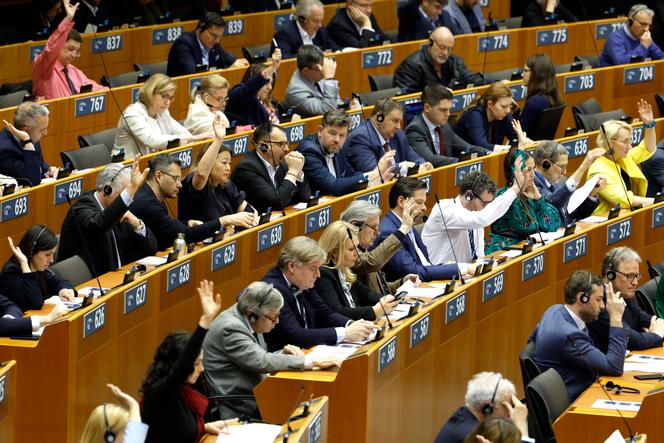


Some invoke history, others hope to finally move on. On Wednesday, April 10, four months after the member states, the European Parliament validated some 10 regulations and directives that make up the Pact on Migration and Asylum. The vote was a little less narrow than expected on the most controversial texts, passing with a majority of around 30 votes. Human rights activists interrupted the vote for a few minutes, chanting "The pact kills, vote no!"
Nine years after the arrival of 2 million Syrian refugees in Europe, and after several attempts at reform to harmonize national migration policies, the 27 Member States have finally reached a compromise on a subject that has caused tension between them for years. They now hope that the new common rules will make it possible to improve dealing with the arrival of migrants at Europe's borders. In 2023, some 380,000 people attempted to enter Europe illegally, up 17% in 2022.
"This is a proud moment," said Ylva Johansson, Commissioner for Home Affairs, who has spearheaded the project for the past four and a half years. "This text will make a major difference to the way irregular immigration is managed today. We will do it in an orderly fashion. On the one hand, we will protect our borders, while on the other we will give protection to people fleeing war and persecution."
States will have to introduce registration, screening (including a health examination), and accelerated asylum application procedures at borders for applicants clearly not eligible for refugee status. Countries will have six weeks to analyze their applications. If their applications are rejected, countries will be able to deport them within six to ten weeks. In the event of a sudden rise in migratory pressure, solidarity mechanisms between member states will be activated to relieve "frontline" countries.
Although this series of texts has found a majority in the Council and Parliament – part of the left and the far right voted against or abstained, the former deeming them too firm, the latter too lax – it is nevertheless perceived as an unprecedented tightening of migration management in Europe.
While many European leaders welcomed the vote, others condemned it. Some 161 human rights and refugee aid NGOs, as well as specialists working on the subject, called for the text to be rejected. For them, "the introduction of compulsory border procedures will be dangerous, inhumane, impractical and ineffective."
In general, however, everyone wants to move on to other stages. "Criticism of the Pact is legitimate, but it sets out a certain number of common rules. It's not an end in itself, but a starting point for something else," said Camille Le Coz of the Migration Policy Institute in Brussels. The only positive aspect of this vote, which will make it even more difficult for refugees to access European protection," said Catherine Woollard of the European Council on Refugees and Exiles, "is that we will finally be able to move on to something else."
You have 49.73% of this article left to read. The rest is for subscribers only.
